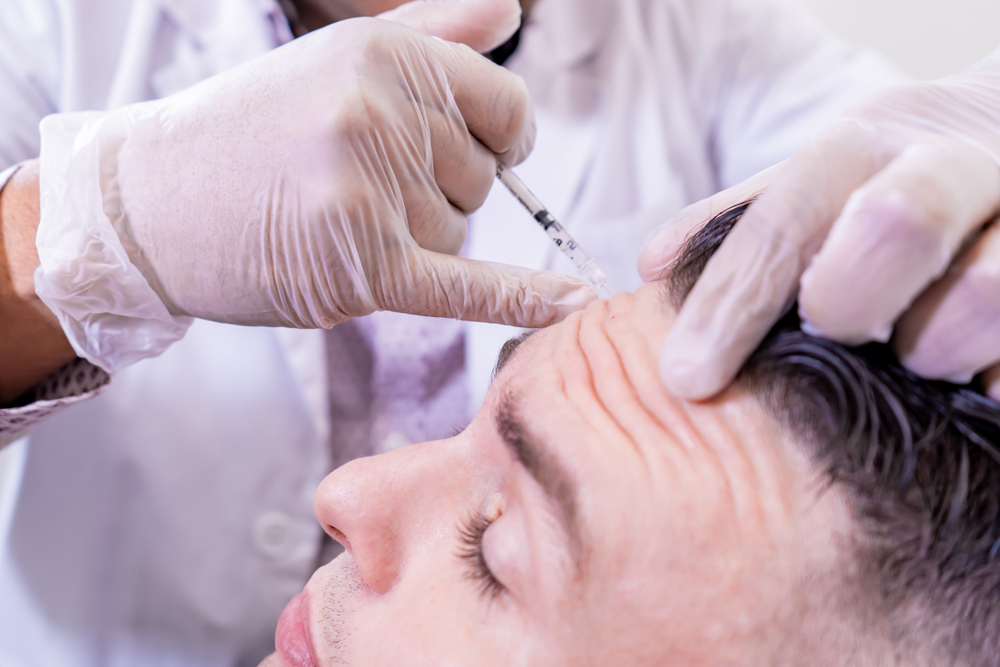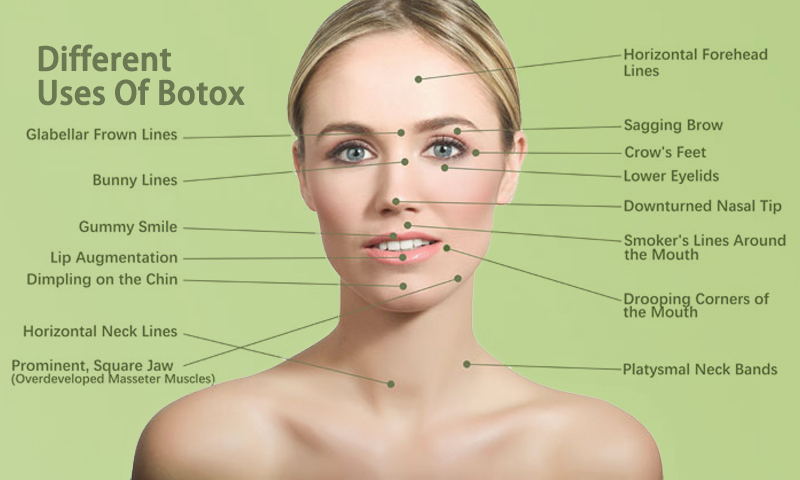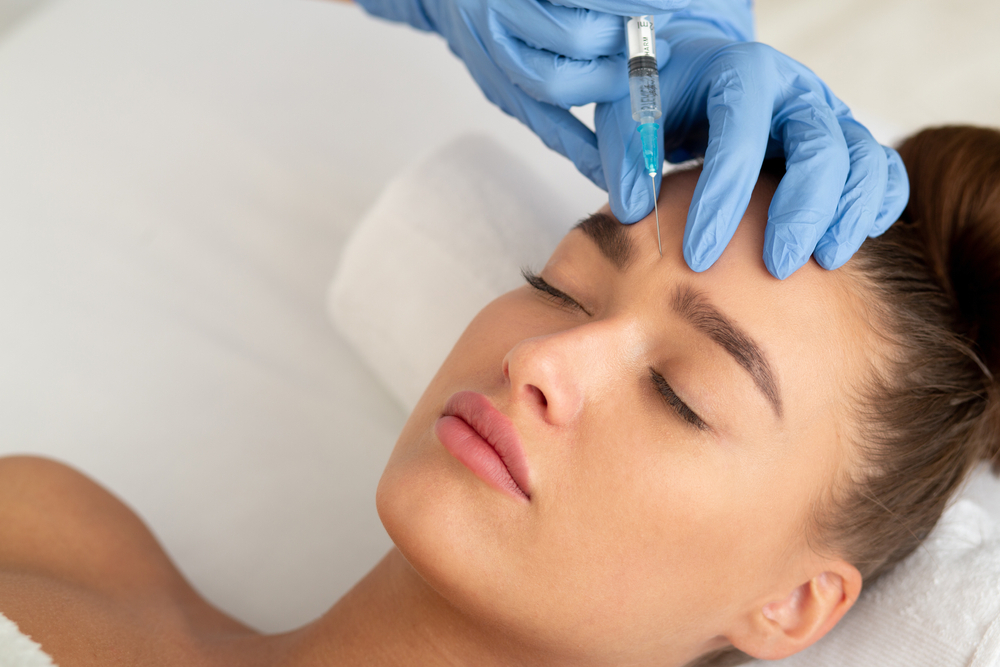Botox, once considered only to be useful for cosmetic enhancements, has evolved into an invaluable medical tool. Beyond its primary use in wrinkle reduction, Botox offers therapeutic solutions for many medical conditions – NovuSkin would like to take you on an in-depth tour of Botox’s medical applications and the many advantages they bring. From treating wrinkles to alleviating migraines, excessive sweating, overactive bladder, cervical dystonia, blepharospasm, strabismus, chronic pain, and temporomandibular joint disorder (TMJ), Botox stands as a multifaceted ally in healthcare.
Botox for Wrinkles: Aesthetic and Therapeutic Marvel
One of the most well-known uses of Botox is for wrinkle reduction. It works by temporarily paralyzing the facial muscles responsible for the formation of wrinkles, giving the skin a smoother and more youthful appearance. While this cosmetic application is widely popular, it’s important to recognize that it also offers therapeutic benefits.
Botox for Bruxism
Bruxism (Teeth Grinding): Bruxism is a condition where individuals grind or clench their teeth, often involuntarily, leading to facial pain, headaches, and dental damage. Botox can be injected into the jaw muscles responsible for this clenching, effectively relaxing them. As a result, the intensity of teeth grinding is reduced, alleviating pain and preventing further dental issues.
Botox for Facial Spasms
Facial Spasms: Conditions like hemifacial spasm, characterized by involuntary muscle contractions on one side of the face, can be treated with Botox. By targeting the affected facial muscles, Botox injections can significantly reduce spasms, improving both the physical appearance and comfort of the patient.

Botox for Migraines: Unlocking Relief
Migraines can be debilitating, and for those who suffer from them, relief often feels out of reach. Botox has emerged as a promising option for migraine management:
Mechanism of Action: While the precise mechanism isn’t fully understood, Botox’s effectiveness in treating chronic migraines revolves around its ability to disrupt pain signaling pathways. Administered into specific head and neck muscles, Botox interrupts these pathways, reducing migraine frequency and intensity.
Treatment Regimen: Botox treatment for migraines involves a series of injections every 12 weeks. Patients typically experience a gradual reduction in migraine frequency and severity over time.
Botox for Excessive Sweating: Tackling Hyperhidrosis
Excessive sweating, known as hyperhidrosis, can significantly impact a person’s quality of life, causing social embarrassment and discomfort:
Procedure: Botox addresses hyperhidrosis by targeting sweat glands in problem areas like the underarms, palms, or feet. By temporarily blocking acetylcholine, the neurotransmitter responsible for stimulating sweat production, Botox effectively reduces excessive sweating.
Duration of Relief: Botox treatment provides relief for several months, offering a long-lasting solution for those grappling with hyperhidrosis.
Botox for Overactive Bladder: Regaining Control
Overactive bladder (OAB) can disrupt daily life:
Treatment Process: Botox is administered via cystoscopy, a minimally invasive procedure. By injecting Botox into the bladder muscle, muscle contractions are reduced, alleviating urgency to urinate.
Duration of Effect: Botox’s benefits for overactive bladder usually last six to nine months. Repeat injections may be required to maintain relief.
Botox for Cervical Dystonia: Easing Muscle Spasms
Cervical dystonia, a neurological disorder, causes involuntary muscle contractions in the neck, resulting in pain and abnormal head positioning. Botox offers hope for patients dealing with this challenging condition.
Injection Technique: Botox injections target affected neck muscles, focusing on areas prone to spasms. Temporarily weakening these muscles provides relief from painful contractions and facilitates a more natural head position.
Sustained Relief: Botox provides substantial relief for cervical dystonia, though its effects are temporary and typically last around three months. Regular treatments are crucial for maintaining comfort and stability in head positioning.

Other Therapeutic Uses of Botox
Botox’s therapeutic versatility extends to various other conditions:
Botox for Blepharospasm
Uncontrollable blinking or eyelid twitching, known as blepharospasm, can be treated with Botox. Injections into the affected eye muscles reduce spasms, improving vision and comfort.
Botox for Strabismus
Botox effectively treats strabismus (crossed eyes) by relaxing specific eye muscles, enabling proper eye alignment.
Botox for Chronic Pain Management
Botox shows promise in managing chronic pain conditions, including myofascial pain syndrome and neuropathic pain. By reducing muscle tension and alleviating nerve-related pain signals, it offers significant relief.
Botox for Temporomandibular Joint Disorder (TMJ)
Those suffering from TMJ-related jaw pain find relief through Botox injections into jaw muscles. The relaxation of these muscles decreases pain and improves jaw function.
Extra Read: Botox vs. Fillers: Which One is Right for You?
Botox has made remarkable advances from its initial use for cosmetic enhancement to becoming a key medical therapy, offering hope and relief to numerous individuals suffering from various medical conditions. Botox’s precision in targeting specific muscles while temporarily paralyzing them has completely revolutionized how we approach medicine today, offering hope to millions.
Botox has not only enhanced lives through aesthetic enhancement, but it has also proven useful in treating medical challenges of various sorts. From chronic migraines and overactive bladders to relieving cervical dystonia discomfort and excessive sweating – its versatility knows no boundaries – Botox therapy’s therapeutic benefits stand as testaments of human ingenuity and advancement of medical science.
The Future of Botox in Medicine
As we look ahead, Botox appears to have an exciting future in medicine. Research and exploration into new applications of this neurotoxin could expand its role even further; making this momentous time in healthcare all the more remarkable with Botox set to continue making significant contributions.
Working with experts
Consultations with qualified medical professionals are of utmost importance when considering Botox therapy as a treatment for various medical conditions, to ensure safe and effective administration tailored specifically to individual needs.
At NovuSkin, we are here to provide you with guidance, answer your questions, and connect you with qualified professionals who can assist you on your healthcare journey.
Contact us today to take the next step towards a better, more comfortable life with Botox. Your well-being is our priority.







